364797
Disperse Orange 3
Dye content 90 %
Synonym(s):
4-(4-Nitrophenylazo)aniline
Sign Into View Organizational & Contract Pricing
All Photos(2)
About This Item
Linear Formula:
O2NC6H4N=NC6H4NH2
CAS Number:
Molecular Weight:
242.23
Colour Index Number:
11005
Beilstein:
1842907
EC Number:
MDL number:
UNSPSC Code:
12352103
PubChem Substance ID:
NACRES:
NA.23
Recommended Products
composition
Dye content, 90%
mp
~200 °C (dec.) (lit.)
λmax
443 nm
SMILES string
Nc1ccc(cc1)\N=N\c2ccc(cc2)[N+]([O-])=O
InChI
1S/C12H10N4O2/c13-9-1-3-10(4-2-9)14-15-11-5-7-12(8-6-11)16(17)18/h1-8H,13H2/b15-14+
InChI key
UNBOSJFEZZJZLR-CCEZHUSRSA-N
Looking for similar products? Visit Product Comparison Guide
General description
Disperse Orange 3 (DO3) is a monoazo dye, which contains 90% dye content plus dispersing agents and surfactants. It has two aromatic rings with an amino group on one of the rings and the other is substituted with a nitro group. It shows an absorption peak majoring at 415 nm.
Application
DO3 can be used in low concentration to improve the electro-optic properties of dichroic polymer-dispersed liquid crystals, which can be used as materials for display devices. It can also be used to functionalize epoxy-bisazo based polymers, which can be potentially used in sensors and optoelectronics.
Features and Benefits
Used to provide experimental verification of a two-level model for the enhancement of the nonresonant, nonlinear refractive index, with a decrease in absorption by reduction of a donor group strength.
Signal Word
Warning
Hazard Statements
Precautionary Statements
Hazard Classifications
Eye Irrit. 2 - Skin Irrit. 2 - Skin Sens. 1 - STOT SE 3
Target Organs
Respiratory system
Storage Class Code
11 - Combustible Solids
WGK
WGK 3
Flash Point(F)
Not applicable
Flash Point(C)
Not applicable
Personal Protective Equipment
dust mask type N95 (US), Eyeshields, Gloves
Choose from one of the most recent versions:
Already Own This Product?
Find documentation for the products that you have recently purchased in the Document Library.
Biodegradation of a model azo disperse dye by the white rot fungus Pleurotus ostreatus.
Zhao X, et al.
International Biodeterioration & Biodegradation, 57(1), 1-6 (2006)
Analysis of dichroic dye-doped polymer-dispersed liquid crystal materials for display devices.
Kumar P, et al.
Thin Solid Films, 520(1), 457-463 (2011)
The role of molecular conformation and polarizable embedding for one-and two-photon absorption of disperse orange 3 in solution.
Silva DL, et al.
The Journal of Physical Chemistry B, 116(28), 8169-8181 (2012)
Anthony T-J Goon et al.
Contact dermatitis, 48(5), 248-250 (2003-07-19)
Cross-sensitization between para-phenylenediamine (PPD) and Disperse Orange 3 (DO3), among other textile dyes, has frequently been reported. We evaluated the frequency of simultaneous patch test reactions to PPD and a range of textile dyes. Retrospectively, we studied 128 patients who
Epoxy-based polymers functionalized with bisazo chromophores: Synthesis, characterization and photoresponsive behavior.
Wang X, et al.
Polymer, 52(15), 3344-3356 (2011)
Our team of scientists has experience in all areas of research including Life Science, Material Science, Chemical Synthesis, Chromatography, Analytical and many others.
Contact Technical Service
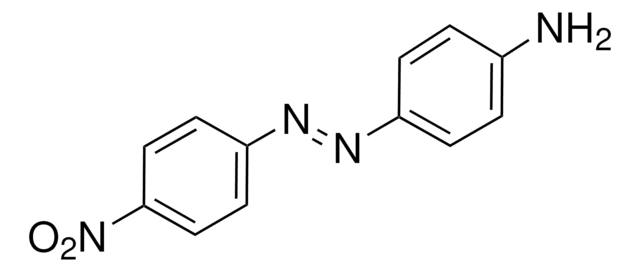
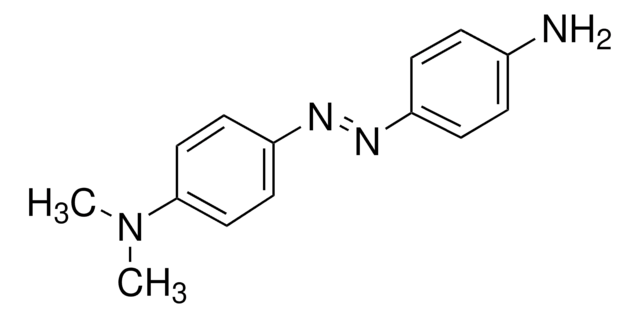
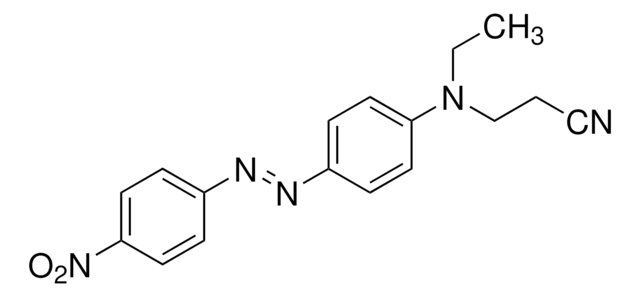
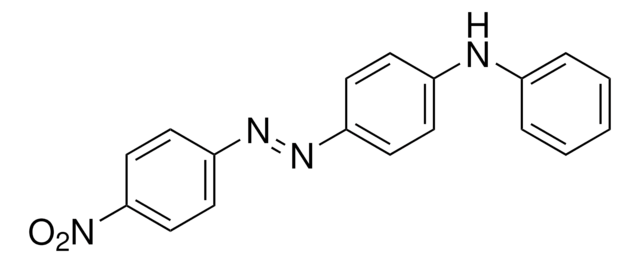
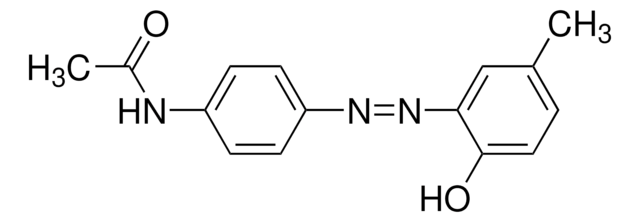

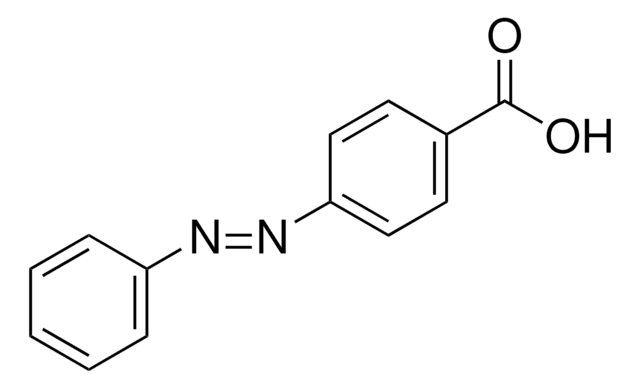
![4-[4-(Dimethylamino)phenylazo]benzoic acid N-succinimidyl ester ≥98.0% (HPLC)](/deepweb/assets/sigmaaldrich/product/structures/120/235/500b5276-3ce2-43b7-9588-3883f13d4ff7/640/500b5276-3ce2-43b7-9588-3883f13d4ff7.png)

